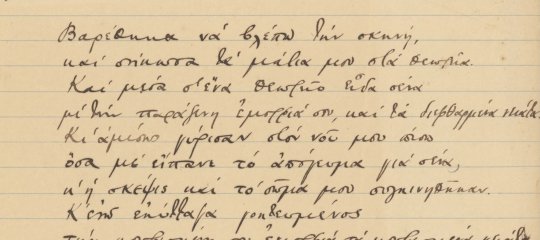Η διδασκαλία της ελληνικής στη Σταυρούπολη της Ρωσίας
Με την ανάληψη των καθηκόντων μας, συγκροτήσαμε όσο το δυνατόν καλύτερα από πλευράς μαθητικού και φοιτητικού δυναμικού, ολιγομελή τμήματα, ισοδύναμα αριθμητικά, αφού προηγήθηκε διάλογος με τους εκπαιδευτικούς της ομογένειας σχετικά με τους στόχους και τις προοπτικές δημιουργίας βιώσιμων τμημάτων σε όλα τα επίπεδα. Ομάδες εργασίας εκπαιδευτικών ασχολήθηκαν με την αξιολόγηση του υπάρχοντος δυναμικού των σπουδαστών, οι οποίοι γνώριζαν σε καλό ή πολύ καλό βαθμό την ελληνική γλώσσα. Υπήρξε ποικιλία μαθησιακών αναγκών των σπουδαστών. Προτείναμε σύγχρονες στρατηγικές μάθησης και χρήσης του προφορικού και γραπτού λόγου οι οποίοι εξυπηρετούσαν τους μαθησιακούς στόχους του Αναλυτικού Προγράμματος και δώσαμε ιδιαίτερη έμφαση στον διαπολιτισμικό παράγοντα. Οι διδασκόμενοι προέρχονται από διαφορετικές εθνοτικές ομάδες (Ρώσοι,Ουκρανοί,Γεωργιανοί,Αρμένιοι κλπ.) με συνδετική γλώσσα επικοινωνίας τη ρωσική και με πρωτεύοντα στόχο την εκμάθηση της ελληνικής. Η βασική γνώση της γραμματικής - φωνολογία, μορφολογία, σύνταξη - για τους ενήλικους κυρίως σπουδαστές δεν παρουσιάζει σημαντικές διαφορές. Η επιλογή όμως της θεματολογίας επηρεάζεται άμεσα από την εκάστοτε ιδιαιτερότητα της ομάδας που τίθεται ως μαθησιακός στόχος. Ορισμένοι σκοπεύουν απλά να ταξιδέψουν στη χώρα μας ή την Κύπρο και θέλουν να είναι σε θέση να επικοινωνήσουν στοιχειωδώς στην τοπική γλώσσα, ώστε να μην αναζητούν μια από τις διαδεδομένες γλώσσες. Άλλοι θέλουν μεγαλύτερη επικοινωνιακή δεξιότητα, είτε γιατί θέλουν να γνωρίσουν καλύτερα τους ανθρώπους και την κουλτούρα τους, είτε γιατί θέλουν να εγκατασταθούν μόνιμα και να εργαστούν εκεί. Εφαρμόσαμε για τα τμήματα ενηλίκων σπουδαστών το Αναλυτικό Πρόγραμμα για τα επίπεδα 1 και 2 - εισαγωγικό και βασικό - που επιμελήθηκε το Πανεπιστήμιο της Αθήνας, Φιλοσοφική Σχολή, Τομέας Γλωσσολογίας του Τμήματος Φιλολογίας μέσω του Διατμηματικού Προγράμματος για τη διδασκαλία της Νέας Ελληνικής ως Ξένης Γλώσσας. Μετά τη συγκρότηση των τμημάτων επισκεφθήκαμε το Τμήμα Λατινικών και Γερμανικών Γλωσσών του Κρατικού Πανεπιστημίου Σταυρούπολης και συζητήσαμε για τις ενταξιακές διαδικασίες ενσωμάτωσης των τμημάτων μας και τους στόχους δημιουργίας αυτών, στο τρέχον παραγωγικό σύστημα της Σχολής Ξένων Γλωσσών. Υπήρξε μεγάλη ανταπόκριση από τον αρμόδιο αντιπρύτανη διεθνών σχέσεων του Πανεπιστημίου κ. Αλεξέι Κρούγκοβ και η διδασκαλία της ελληνικής εντάσσεται πλέον ως συμπληρωματική , προαιρετική της εκπαίδευσης των φοιτητών του Τμήματος Λατινικών και Γερμανικών Γλωσσών σε όλα τα έτη σπουδών. Παράλληλα, απευθυνθήκαμε με επιστολές μας, όσο και με κατ' ιδίαν επισκέψεις, τόσο στο κοινωφελές ίδρυμα "Αλέξανδρος Ωνάσσης", όσο και στα Πανεπιστήμια Ιωαννίνων - ΚΕΔΕΓΠΟ - και Αθήνας - Σχολή Φιλολογίας, απ' όπου εξασφαλίσαμε την απαραίτητη σύγχρονη βιβλιογραφία για την καλύτερη στελέχωση των τμημάτων μας σε διδακτικό υλικό, αλλά και την υποστήριξη του έργου των εκπαιδευτικών. Στην προσπάθειά μας αυτή είχαμε και την αρωγή του ελληνικού προξενείου. Από το 2004 μέχρι σήμερα συμμετείχαν σε προγράμματα ελληνικών πανεπιστημίων - Θεσσαλονίκης, Ιωαννίνων, Αθηνών και Πάτρας - φοιτητές και ομογενείς εκπαιδευτικοί της Σταυρούπολης . Επίσης , φοιτητές μας συμμετείχαν στις εξετάσεις για πιστοποίηση της ελληνομάθειας των επιπέδων Β και Γ με απόλυτη επιτυχία. Από την 7ετή εμπειρία μου ως αποσπασμένος εκπαιδευτικός στη Ρωσία και με τη στήριξη των ομογενών εκπαιδευτικών με τους οποίους πραγματοποιήσαμε σεμινάρια επιμορφωτικά κάθε εβδομάδα και καθ' όλη τη διάρκεια του διδακτικού έτους και με βάση τις παρατηρήσεις και τους προβληματισμούς τους , εκπονήσαμε μικρές εργασίες που συνδράμουν το έργο μας σε καθημερινή βάση . Ένα μικρό μέρος αυτών σας αποστέλλουμε. Πιθανόν να βοηθήσουν νέους συναδέλφους που τελούν τα πρώτα βήματα της απόσπασής τους στη Ρωσία ή τις άλλες ρωσόφωνες χώρες.
Θώδης Κωνσταντίνος
εκπαιδευτικός
- Εισέλθετε στο σύστημα για να υποβάλετε σχόλια











